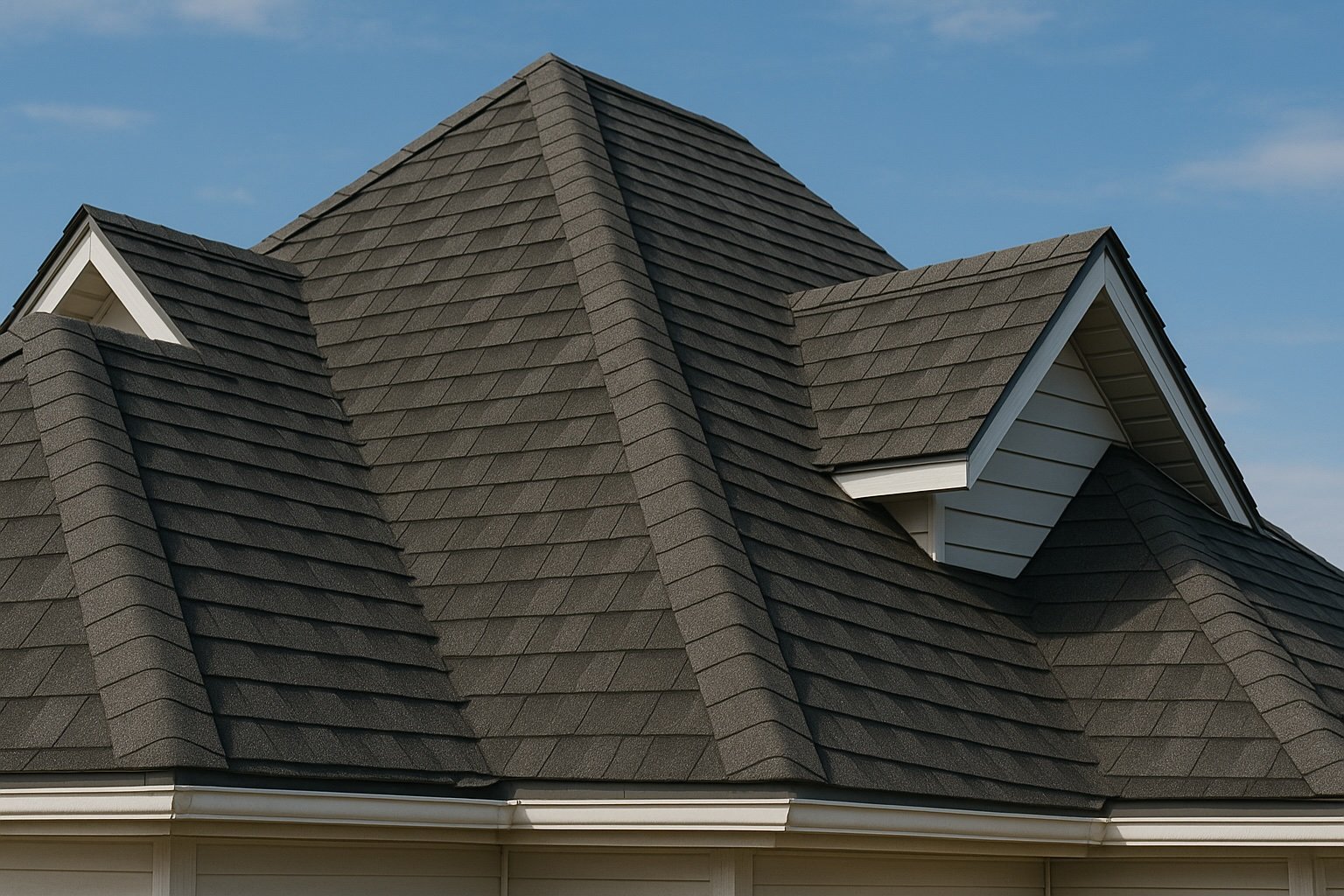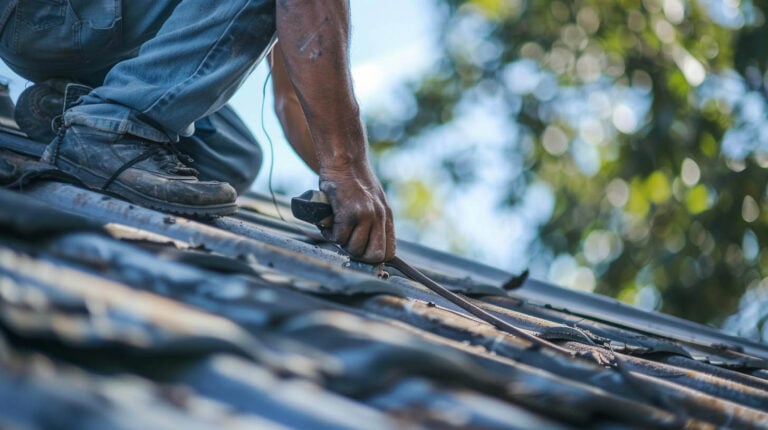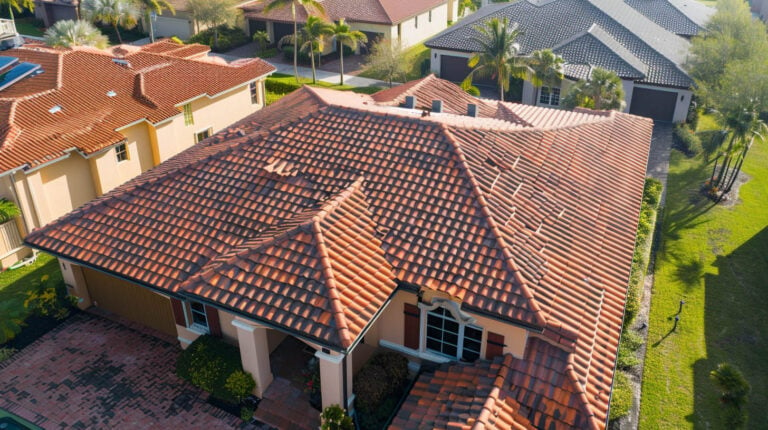Steadfast Roofing is committed to guiding homeowners toward informed decisions about roof design. In Riverview, FL’s unique climate, understanding the minimum roof pitch is essential for long-term weather resilience and structural integrity.
📏 What Is Roof Pitch and Why It Matters
Definition of Roof Pitch
Roof pitch expresses the slope of a roof, calculated as the vertical rise over a 12‑inch horizontal run. For example, a 4:12 pitch means the roof rises 4 inches for every foot of horizontal span.
Importance of Proper Pitch
The slope of your roof directly impacts:
- Water drainage — Low pitches may collect water, increasing leak risk
- Material suitability — Some roofing materials require steeper slopes
- Wind performance — Shallow roofs are more vulnerable in hurricanes and storms
Regulatory Minimums: Building Codes & Local Requirements
Most building codes mandate at least a 2:12 pitch for asphalt shingle roofs, though areas with heavy rainfall or wind exposure may require steeper slopes:
- 2:12–3:12: Acceptable for asphalt shingles with special underlayment
- 3:12–4:12: Standard range for common roofing materials
- >4:12: Ideal for metal, tile, slate, and high‑end shingles
In Riverview, local building codes align with national standards, emphasizing water runoff and wind uplift safety. Flat or near-flat roofs in hurricane zones demand careful design and higher maintenance.
Ideal Pitch by Roofing Material
1. Asphalt Shingles
- Minimum: 2:12
- Recommended: 4:12
- Note: Pitches between 2:12–3:12 require a two‑layer underlayment and diligent flashing.
2. Metal Roofing
- Minimum: 2:12 for standing‑seam systems
- Recommended: 4:12+ for corrugated panels to prevent backflow during heavy storms
3. Wood Shakes & Shingles
- Minimum: 3:12
- Recommended: 4:12–9:12 for proper drainage and lifespan.
4. Clay or Concrete Tile
- Minimum: 4:12
- Recommended: 6:12–10:12
- Reminder: Heavier material demands reinforced roof framing.
5. Slate Roofing
- Minimum: 4:12
- Recommended: 5:12–12:12
- Limits exposed roof surface and offers premium longevity.
Low-Slope Solutions: When Pitch Falls Short
Roof designs below 2:12 are considered low-slope and require special attention:
- Single-ply membranes (TPO, EPDM, PVC) are designed for low-slope performance.
- Proper drainage: Installing tapered insulation or internal drains avoids ponding.
- Enhanced waterproofing: Use self-sealing membranes and strict flashing protocols to ensure durability.
Climate Considerations: Tailoring Pitch for Riverview, FL
Riverview faces heavy rain and periodic storms, which necessitate:
- Minimum 3:12 pitch for asphalt shingles
- 4:12+ for metal and tile systems for stronger runoff performance
- Reinforced wind uplift protection, including hurricane straps and high‑quality fasteners
Pitch vs Aesthetics: Balancing Form and Function
Roof pitch influences more than performance—it defines style:
| Roof Style | Typical Pitch | Visual Impression |
| Bungalow/Craftsman | 4:12–6:12 | Low silhouette, traditional charm |
| Colonial/Gable | 6:12–9:12 | Symmetrical and classic |
| Tudor/Steep | 9:12–12:12+ | Dramatic, storybook appeal |
Choosing a steeper pitch enhances curb appeal but adds to material and construction costs. We help clients weigh visual preference with performance requirements.
Residential Design: Custom Pitch Planning
We consider several factors when recommending roof pitch:
- Material compatibility – Ensuring slope matches roof covering
- Climate risk – Using a higher pitch for better drainage in stormy areas
- Aesthetic goals – Aligning architectural style with neighborhood’s look
- Structural capacity – Ensuring rafters and trusses support weight
- Cost efficiency – Balancing material needs with budget
Steadfast Roofing’s expert team collaborates closely to tailor pitch specifications, ensuring code compliance and design harmony.
Inspections & Retrofitting: Update Your Existing Roof
For existing low-pitch roofs:
- Conduct thorough inspections for leaks, water pooling, flashing, and underlayment
- Retrofitting options:
- Add tapered insulation or inset drains
- Upgrade underlayment to high-performance, self-adhering membranes
- Reframe sections to increase slope where feasible
- Add tapered insulation or inset drains
These enhancements prolong roof life and improve performance without full replacement.
Maintenance Strategies to Support Roof Pitch
Even with optimal pitch, maintenance is crucial:
- Clean gutters and downspouts regularly
- Inspect after storms for damage
- Check flashing, valleys, and penetrations annually
- Trim overhanging branches to reduce debris accumulation
Proper care secures pitch benefits and prolongs system lifespan.
Summary: Pitch for Performance and Longevity
- Asphalt Shingles: Min 2:12 (3:12+ preferred)
- Metal Roofing: Min 2:12 (4:12+ recommended)
- Tile, Slate, Shake: Min 4:12 (5:12+ ideal)
- Low-Slope Memorialization: Use single-ply membranes and ensure top-tier waterproofing
- Climate Awareness: Steeper pitches serve well in Riverview’s wet, storm-prone environment
Conclusion
Achieving the right roof pitch is a cornerstone of long-lasting, weather-resistant roofing. It enhances drainage, supports optimal material performance, and safeguards investments—especially in Riverview’s challenging climate. Partner with Steadfast Roofing and build a roof that’s not just visually pleasing, but engineered for real-world resilience and years of protection.
Read one of our latest blogs: “Essential Signs Your Roof Is Leaking (and What to Do Next)”.




